The Natural Fractals of Google Earth

Spain. (Photo: Paul Bourke/Google Earth fractals)
What is this picture? Would you believe us if we told you that it’s a European country?
While it resembles the crystalline edges of an AI dreamscape, the image above is actually Spain, massively zoomed out. It’s also a fractal, a set of geometric structures that replicate themselves across infinite scales. If you’ve ever fallen down a YouTube rabbit hole, you’ve probably seen many fractal videos of constant zooming into mathematically perfected shapes—along with the requisite psychedelic colors and trippy music.
The fractals in this collection all come from one source, namely Google Earth. Paul Bourke, a computer scientist at the University of Western Australia has painstakingly assembled a collection of 45 maps with help from online contributors on his website. Using Google Earth, Bourke looked at different areas across the globe: mountain ranges, river basins, sand dunes, grasslands, and forests. He found that, when zoomed out, these landscapes formed replicating patterns. If you think of a plant, with the veins within a leaf form the same dendritic shape as the stem and the branches, the same principle can be found in rivers. Tributaries branch off of the main stream, and so forth, following a similar pattern until you get down to the smallest springs. While not infinitely uniform, these natural fractals do replicate themselves across a smaller range of scales.

The most poignant aspect of these images is the scale. Using Google Earth, we can see what the surface of the planet looks like from a satellite’s perspective. The zoomed out images of mountain tops and river basins have remarkably similar shapes to the circulatory systems of mammals. Far beyond the scope of human eyesight—the natural world is filled with these replicating patterns. It’s a fractal world, and we’re all just living in it.
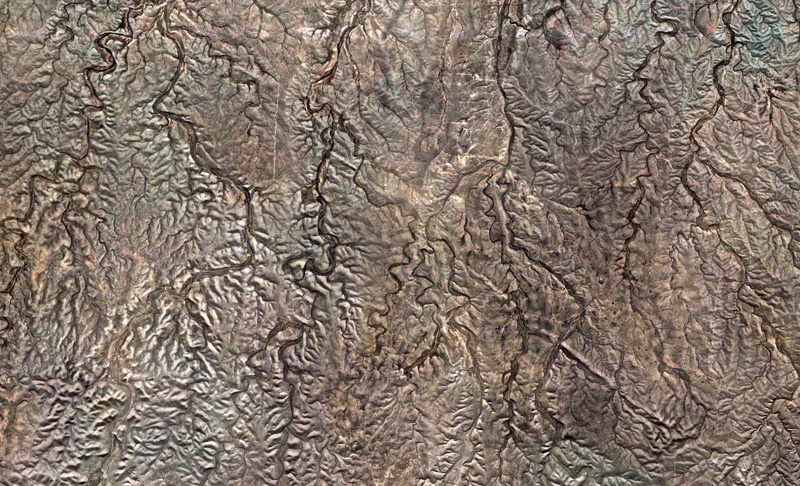
USA. (Photo: Paul Bourke/Google Earth fractals)
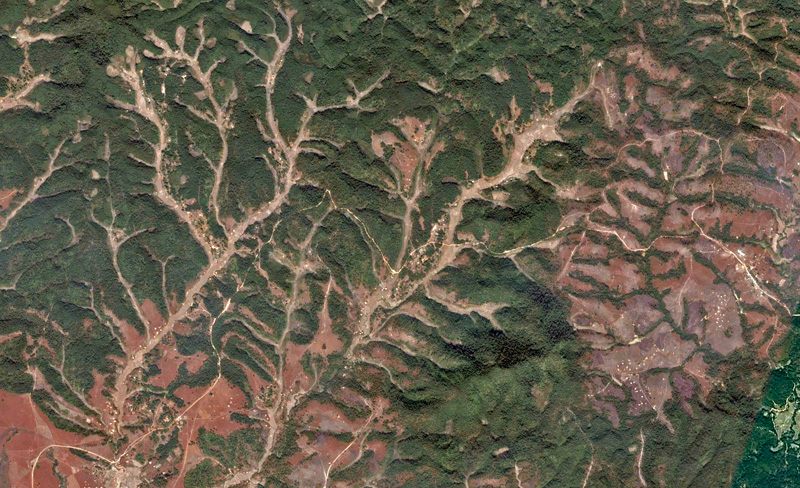
Laos. (Photo: Paul Bourke/Google Earth fractals)
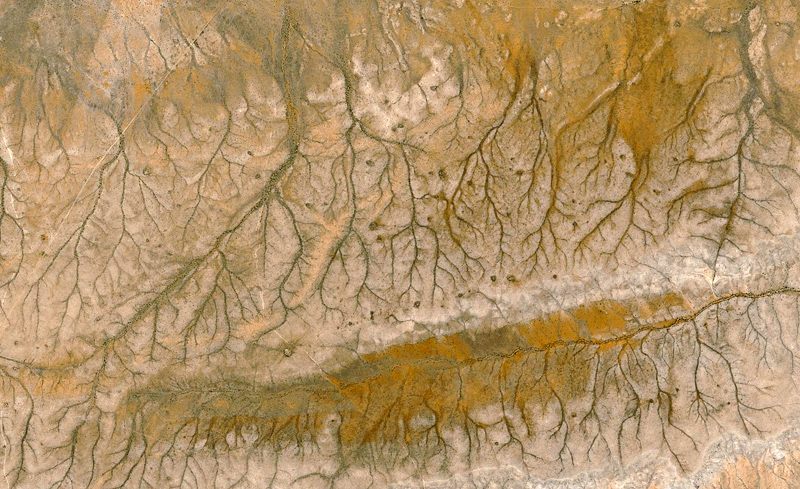
Namibia. (Photo: Paul Bourke/Google Earth fractals)
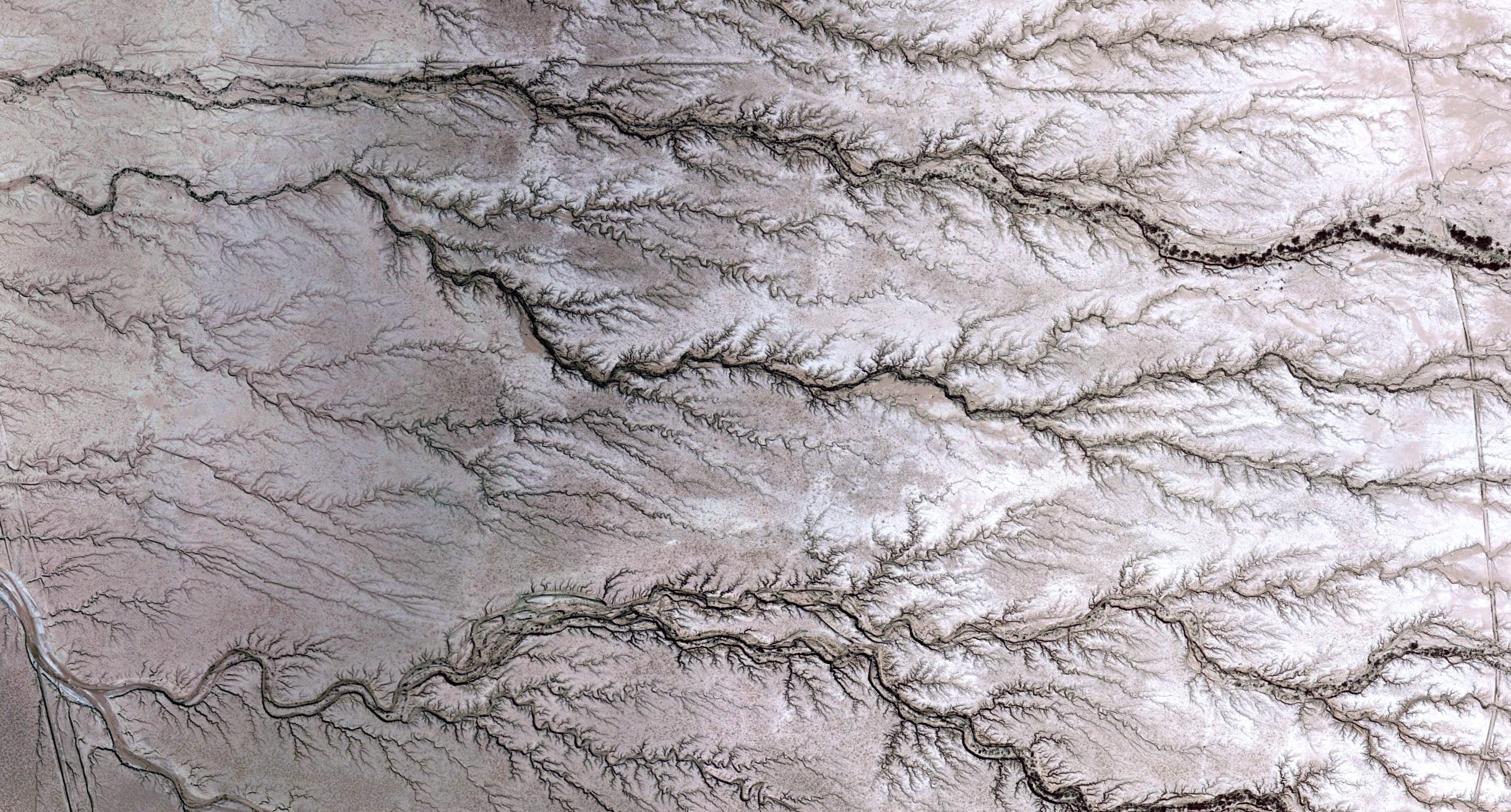 California. (Photo: Paul Bourke/Google Earth fractals)
California. (Photo: Paul Bourke/Google Earth fractals)
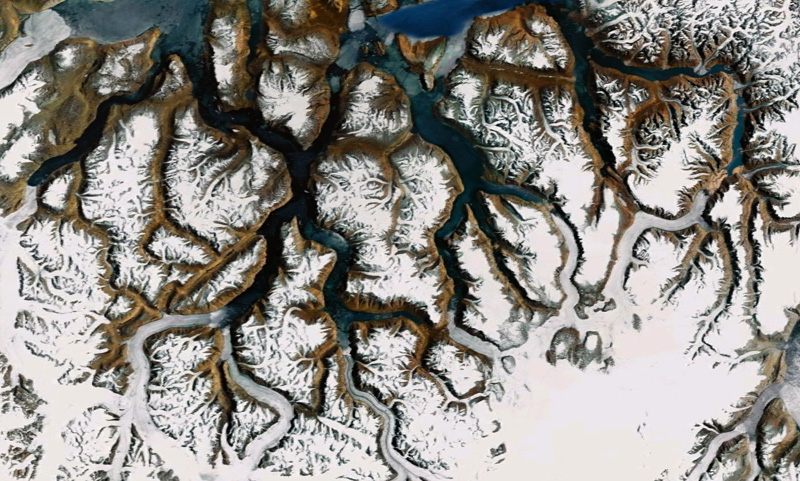
Greenland. (Photo: Paul Bourke/Google Earth fractals)
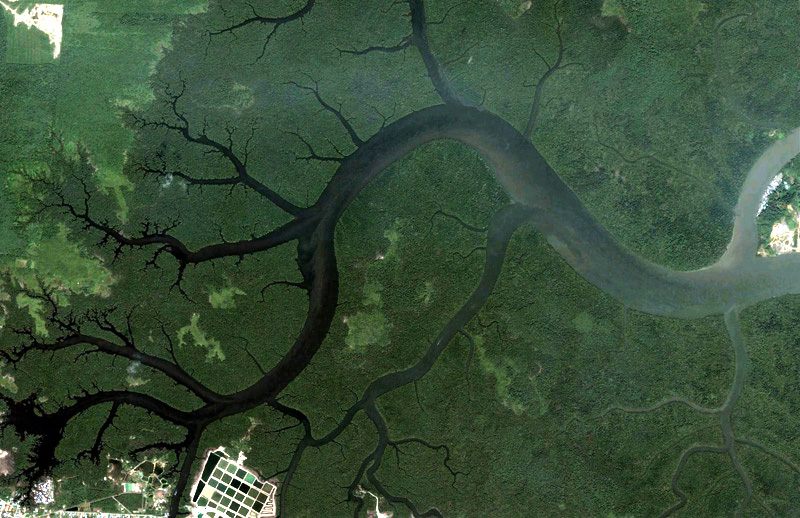 Myanmar. (Photo: Paul Bourke/Google Earth fractals)
Myanmar. (Photo: Paul Bourke/Google Earth fractals)
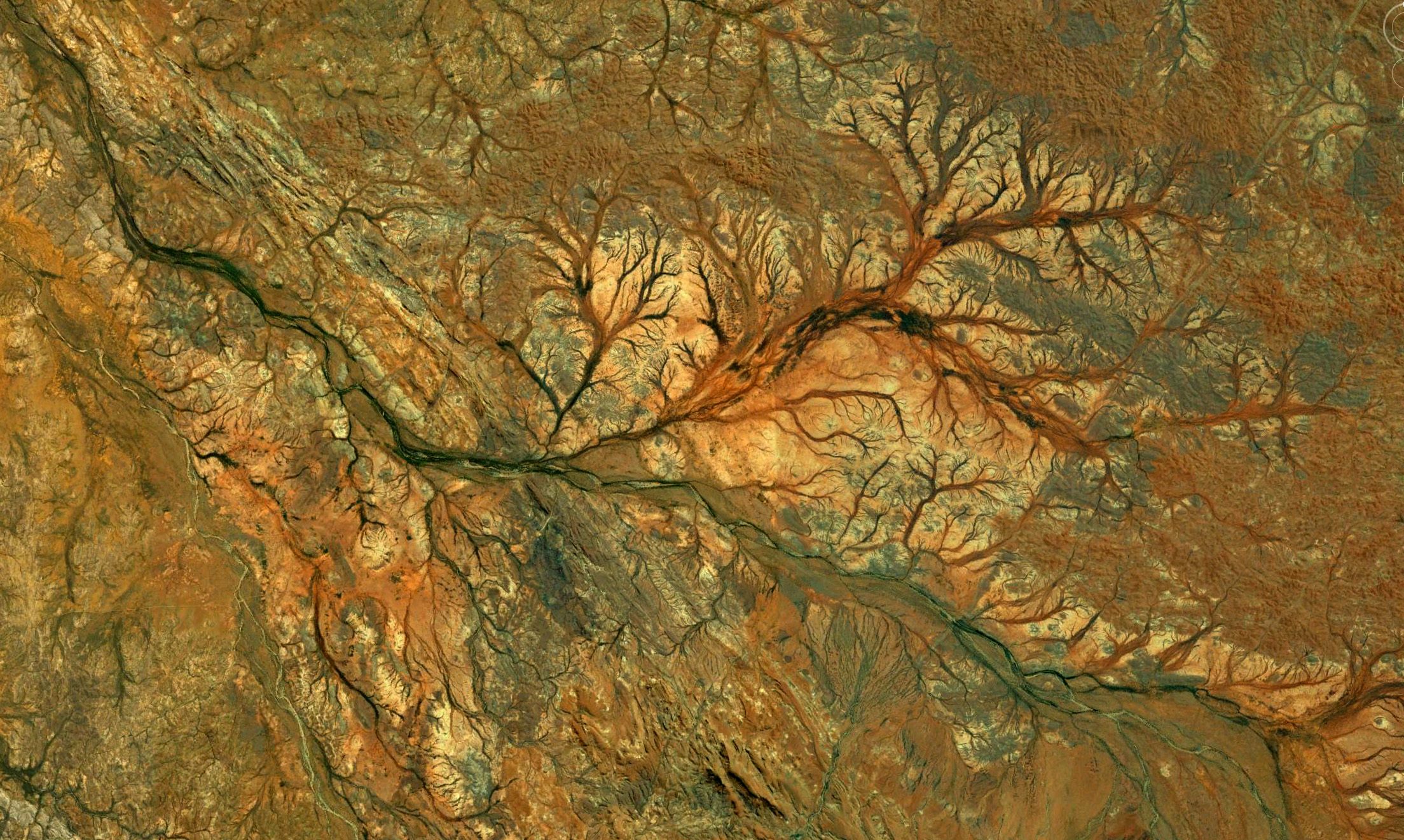 Australia. (Photo: Paul Bourke/Google Earth fractals)
Australia. (Photo: Paul Bourke/Google Earth fractals)
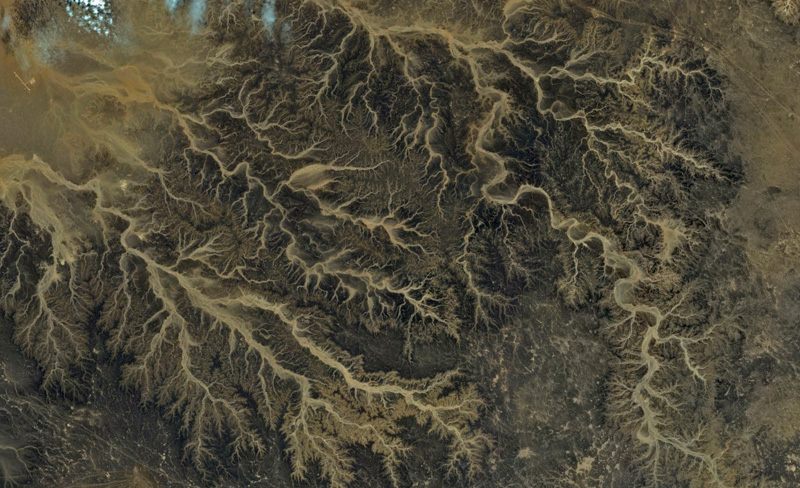 Algeria. (Photo: Paul Bourke/Google Earth fractals)
Algeria. (Photo: Paul Bourke/Google Earth fractals)
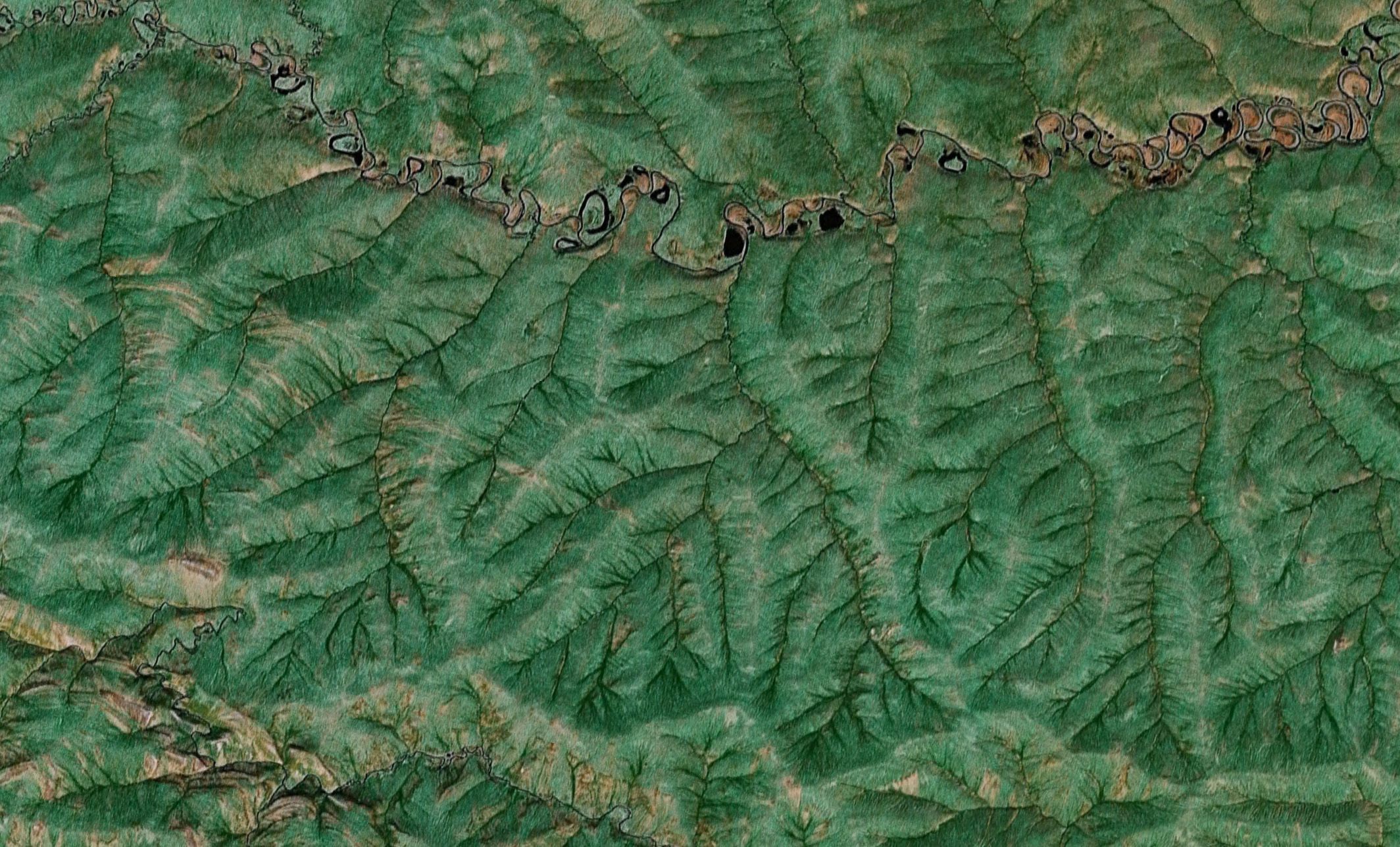 Alaska. (Photo: Paul Bourke/Google Earth fractals)
Alaska. (Photo: Paul Bourke/Google Earth fractals)
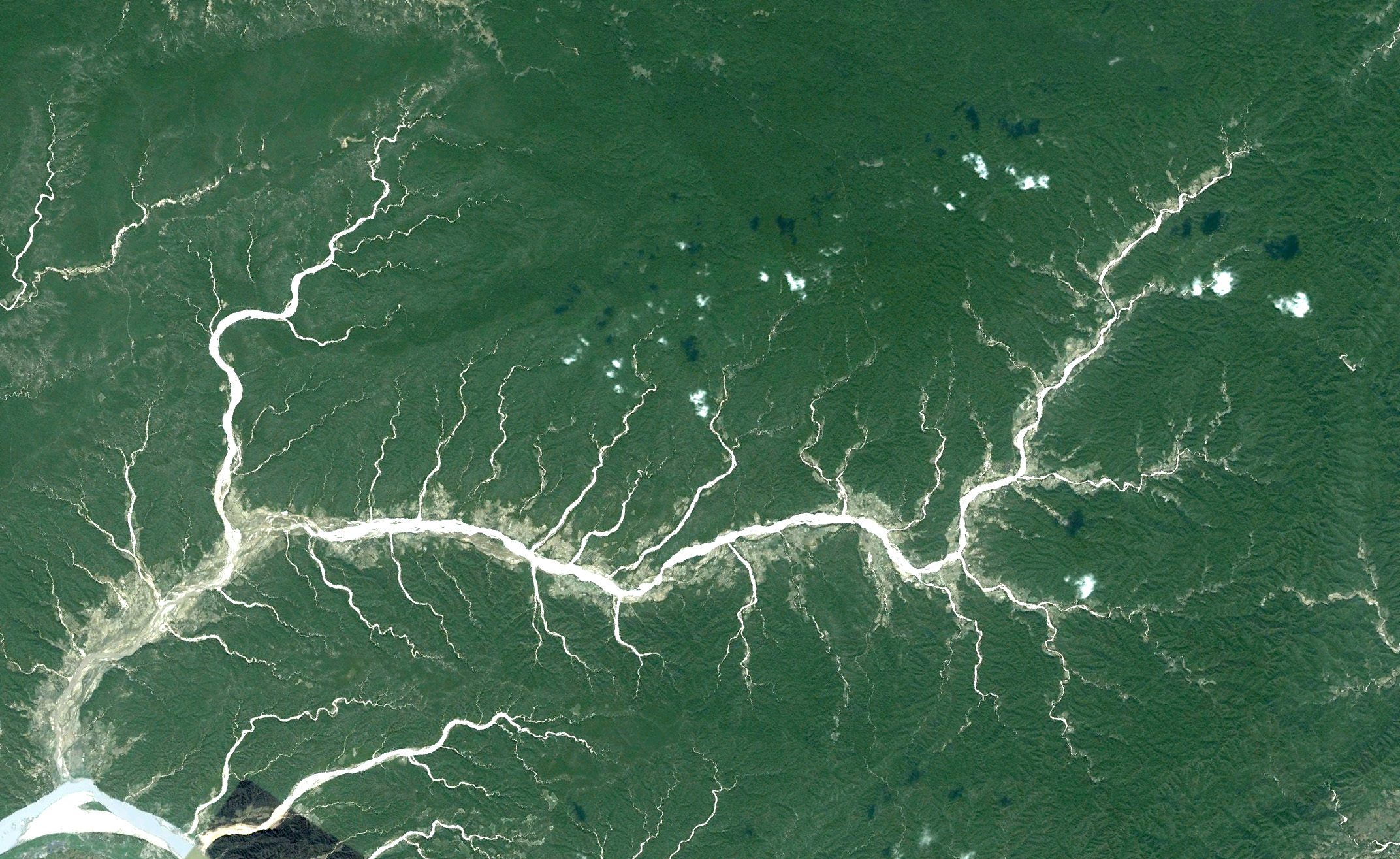 Myanmar. (Photo: Paul Bourke/Google Earth fractals)
Myanmar. (Photo: Paul Bourke/Google Earth fractals)
Map Monday highlights interesting and unusual cartographic pursuits from around the world and through time. Read more Map Monday posts.










Follow us on Twitter to get the latest on the world's hidden wonders.
Like us on Facebook to get the latest on the world's hidden wonders.
Follow us on Twitter Like us on Facebook